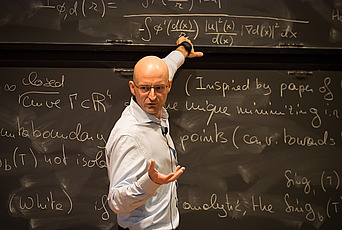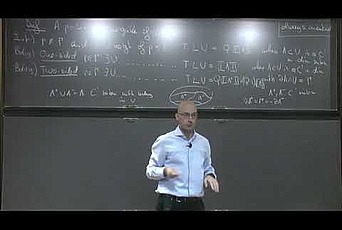
Mathematicians Identify Threshold at Which Shapes Give Way
"In the 1950s, four decades before he won a Nobel Prize for his contributions to game theory and his story inspired the book and film “A Beautiful Mind,” the mathematician John Nash proved one of the most remarkable results in all of geometry. Among other features, it implied that you could crumple a sphere down to a ball of any size without ever creasing it. He made this possible by inventing a new type of geometric object called an “embedding,” which situates a shape inside a larger space — not unlike fitting a two-dimensional poster into a three-dimensional tube.
...
Since then, mathematicians have sought to gain a precise understanding of the limits of Nash’s pioneering techniques. He showed that you could crumple the sphere using twists, but he didn’t prove exactly how much twisting you needed, at a minimum, to get that result. Put another way, mathematicians after Nash have wanted to quantify the exact threshold between flatness and twistedness, or more generally, smoothness and roughness, at which a shape like the sphere begins to crumple.
And in a pair of recent papers they have, at least for a sphere sitting in a higher-dimensional space. In a paper posted in September 2018 and published in March 2020, Camillo De Lellis of the Institute for Advanced Study in Princeton, New Jersey, and Dominik Inauen of Leipzig University identified an exact threshold for one particular shape. Later work in October 2020, by Inauen and Wentao Cao, now of Capital Normal University in Beijing, proved that the threshold applied to all shapes of a certain general type.
The two papers significantly improve mathematicians’ understanding of Nash embeddings. They also establish an unlikely connection between embeddings and fluid flows."
Read more at Quanta.


